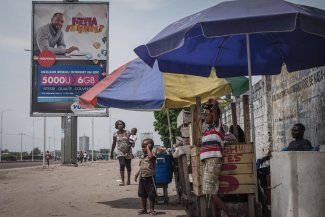

Women’s economic and social interests have long played second fiddle in shaping the world of work. Both gendered perceptions and poor representation in decision-making have meant that women’s work continues to be undervalued. However, there is some evidence of a changing tide. New tools are being developed in the context of the 2030 Agenda, which can help to bridge the gap between policy-making and the realities of working women.
While the Sustainable Development Goal (SDG) indicators are far from comprehensive, some will be instrumental to addressing barriers to women’s economic empowerment. Most notably, targets 1.3, 5.4, 5.5, 8.3 and 8.8 – social protection coverage, unpaid domestic and care work, the makeup of managerial positions, informal employment and collective bargaining coverage respectively – foresee the collection and regular updating of gender-disaggregated national data.
This data is essential to measuring progress towards the SDGs as well as to ensuring its social sustainability. It helps people link the improvements that they experience in their everyday lives to specific policies.
Trade unions and other representative civil society organisations play a crucial role in raising awareness of the benefits and challenges posed by given policies, and in making sure hard-won progress is not reversed.
Therefore, providing transparent, verifiable and accessible data is central to strengthening these processes of democratic accountability.
However, two years into the implementation of the 2030 Agenda this fundamental part of the process remains very much a work in progress. While statisticians from around the world gather in New York and Geneva to iron out the technical details of gathering comparable data for 232 SDG indicators across 193 countries, the clock is ticking.
The setting of methodologies is certainly a technical process but that does not guarantee its neutrality. For example, the ongoing wrangle over how to measure collective bargaining coverage is political in nature. While collective bargaining agreements protect vulnerable workers from abuse by setting minimum standards for a given sector or workplace, lower rates of collective bargaining amongst women can help explain why women workers are more exposed to exploitative conditions than working men. We are capable of producing this data, but it will certainly expose certain hard truths that some would evidently prefer to ignore.
It’s not about painting a pretty picture, but an honest one
Many governments that reported their SDG progress in 2017 opted to showcase their initiatives rather than present an honest evaluation of the situation in their country. Trade unions have been undertaking their own monitoring to give insights into the real progress being made on the ground. In the build up to the Voluntary National Reviews presented by governments, national trade union centres gathered the available data they deemed relevant to specific SDG targets and provided their analysis of recent trends.
This data told a different story to the reports presented by governments, and in some cases, it even revealed a worsening of situations in some countries. While progress on gender equality in Brazil and Argentina had been evident over a ten-year period for instance, recent funding cuts in social security and in projects targeting gender-based violence make for a bleak forecast. India too seems to be doing little to address huge gender pay gaps and increased informalisation of women workers.
Effective policy-making process taps into peoples’ lived experience.
If we are to ensure that all working women can access decent work by 2030 – in line with the SDG commitment – they must be given a voice in the policy-making process.
Women’s participation in social dialogue is key, and integrating it into policy-making structures has been shown to be an effective driver of sustainable development.
Beyond holding governments to account, the role of civil society is also to identify issues and propose solutions in their fields of expertise. Evidence-based advocacy requires access to good data. It is this type of data that provides the basis for such research as the ITUC’s series on the care economy. It shows that public investment in the care economy delivers results. It frees up time otherwise dedicated to responsibilities that are overwhelmingly assumed by women. Crucially, it helps give recognition to the hugely valuable care work that all too often goes unpaid.
Better representing women
Trade unions have also been using the type of data that will be available through the 2030 Agenda process to better represent women. Using it to target women with their organising efforts means that more women are joining unions. This is helping improve their conditions on the work floor. From South Africa to Australia, maternity leave advantages and other family-friendly provisions are increasingly finding their way into collective bargaining agreements.
In the UK, for instance, where most union members are women, unionised women earn between 7 and 14 per cent more than non-unionised women. In Burkina Faso, trade unions are teaming up with grassroots women’s organisations to organise women street vendors in the informal sector and help them access social protection.
With the indicator process stalling, the 2030 Agenda’s implementation efforts continue to be disconnected with the realities they aim to address. Governments must speed up the SDG indicator process by seeing their political commitment through. To build lasting economic empowerment, women need a seat at the table. Governments can do their job by giving the tools to trade unions to do theirs.








